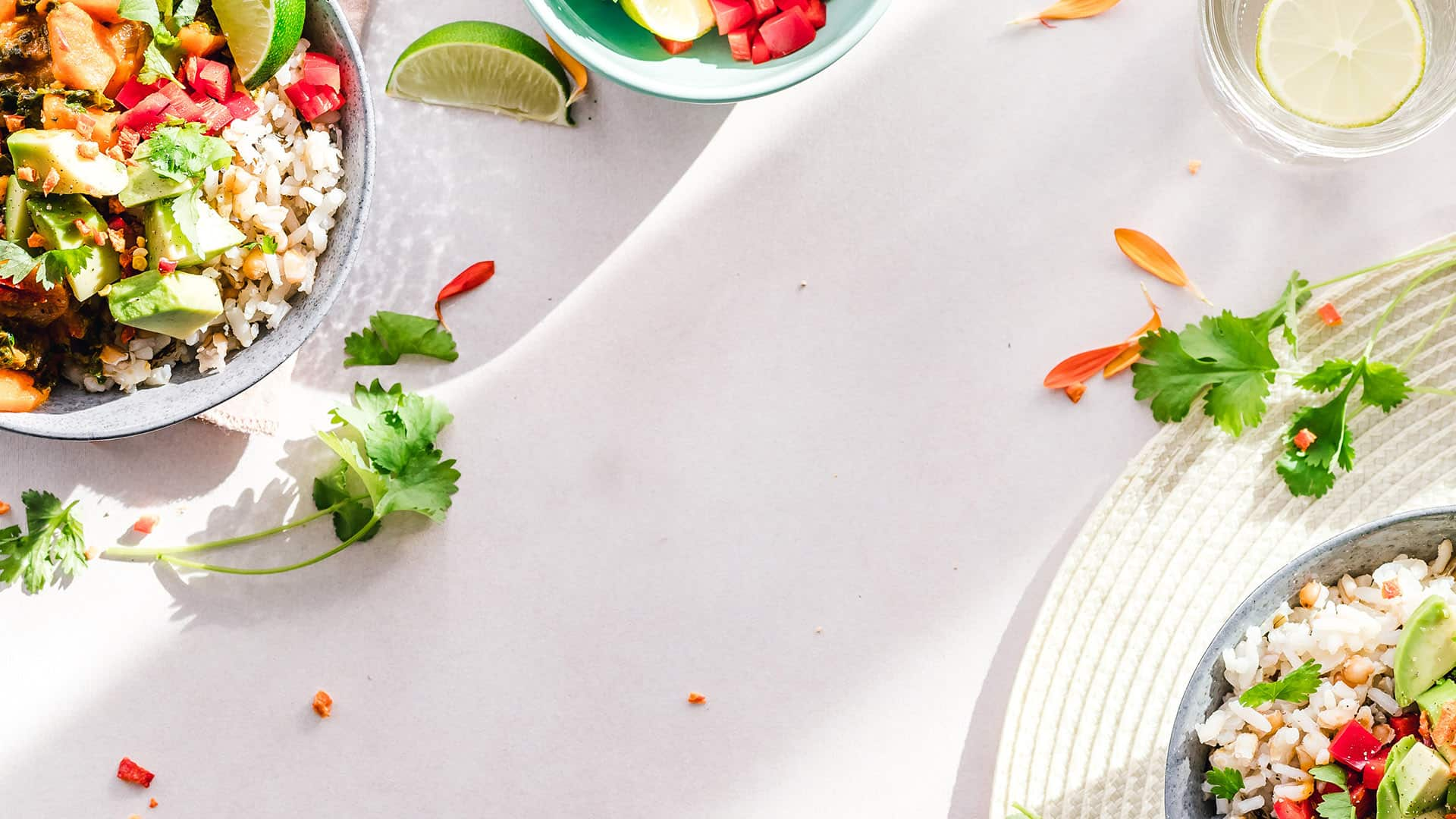

Market Focus: Missing pieces
How – and in what – products are packaged is vital if manufacturers are serious about saving the planet. Here, we showcase 10 packaging experts aiming to make what’s surrounding alternative protein products as sustainable and attractive as the foods themselves
'Shelf appeal’ is the most obvious packaging consideration for alternative protein products. You’ve created a tasty, sustainable product: how do you then convince consumers to choose it when faced with the array of other products in the store?
But packaging design – and the crucial element of design that is labeling – is just one facet of a far broader field when it comes to product packaging for alternative proteins. Determining the cosmetic side of things comes way after considerations such as packaging machine technologies, materials selection, and assessing the technical performance characteristics of the packaging options for a specific product.
That latter point is something that much of the industry (traditional processing and packaging firms, and the newer generation of sustainably focused solutions providers alike) is still figuring out. A plant-based meatball behaves differently to its traditional counterpart, so it naturally requires different processing and packaging options. Then, you need to decide how you’re gonna get it along the supply chain to the store while preserving its appearance, texture, performance, and freshness.
The blindingly obvious
At the heart of every decision is sustainability. There’s no point producing the perfect and sustainable protein product if you need to cover it in reams of plastic to sell it. For plant-based products, in particular, market research consistently demonstrates that consumers of these products prioritize environmental concerns alongside their aim to remove reliance on animal agriculture – just take a glance at Reddit’s various ‘zero waste vegans’ boards for more evidence on that front.
It sounds blindingly obvious, but packaging for a vegan product should itself be vegan. It shouldn’t be comprised of any animal products or byproducts, such as the adhesives commonly used to seal packaging that can be made from the likes of casein and bone glue.
There has certainly been great progress on the technical side and most packaging solutions firms do seem to ‘get’ the concept of sustainability from a materials and business operations perspective. But many of them don’t see the irony in showcasing their ‘sustainable’ solutions on a chicken breast or beef steak. Almost every photo used to promote the big players’ products shows them wrapped around traditional meat, fish, and dairy products. We all know there’s much hypocrisy in ‘clean’ and ‘sustainable’ business sectors, but some packaging companies seem to be missing a trick on the financial side. Why are these big firms not shouting from the rooftops and plastering their websites with photos showing their packaging products used to contain beautiful-looking alt eggs, cheeses, ‘chicken’ nuggets, or plant-based burgers? There’s money as well as ethics in alt proteins.
And, as we showcase on the following pages, there are many up-and-coming packaging innovations – such as boxes made from fungi and plant-based coatings – being
well funded, developed, and rolled out now. Some of the traditional packaging players are also getting in on the action; but maybe they need to promote this a little more?
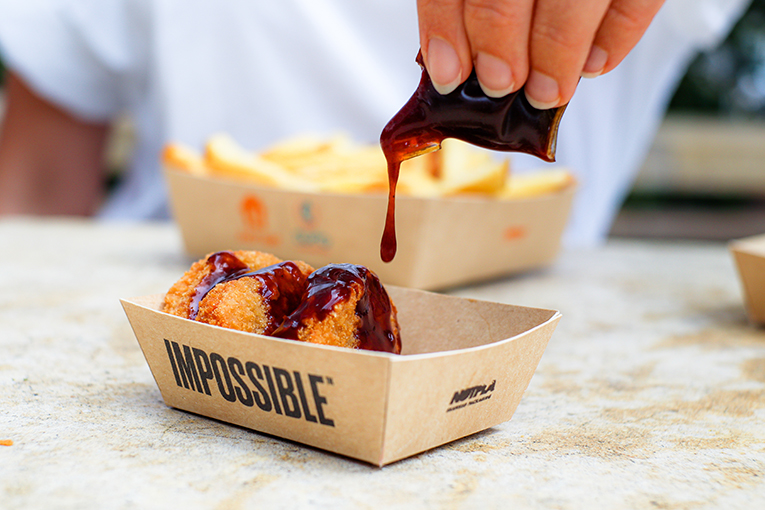
Sustainable solutions from a company whose tagline is ‘We make packaging disappear’
“Notpla’s compostable and plastic-free packaging solutions can certainly provide sustainable packaging options for alternative proteins companies looking to reduce plastic waste and align with eco-conscious values,” comments the company’s Niall Russell. In 2022, the UK innovator partnered with Impossible Foods, a move Russell says was due to both firms “recognizing the strong overlap in values we share around building sustainable, scalable food systems and – ultimately – helping to restore our planet.
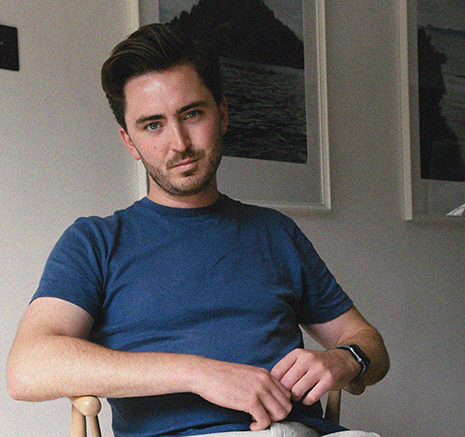
“We provided Notpla sauce sachets (filled with ketchup and barbecue sauce) and our seaweed-coated disposable food trays,” Russell continues. “This was part of their activation for the launch of the new Impossible plant-based chicken nuggets.”
Russell says that Notpla has recognized the demand for its ‘truly plastic-free packaging solutions‘ for on-the-go food-service and – in particular – single-use takeout packaging. “Currently, the market is flooded with all sorts of solutions containing PLA, PFAS or other fossil fuel-derived coatings that create a protective barrier to stop the oil/grease seeping through the paper boxes and trays,” he explains.
“Sadly, there’s a lot of greenwashing going on in this space and consumers and businesses have been led to believe that these are ‘plastic-free’ solutions (often referenced as ‘aqueous’ coatings), and we know this is simply not true.
“Our solution, Notpla Coating, is a fully industrialized range of packaging made from seaweed that offers the same grease, moisture, and oxygen resistance as plastic. Unlike plastic, or bioplastic alternatives though, Notpla can be recycled with normal paper waste streams or simply composted at home without leaving any trace. We’re working with some of the biggest players in Europe such as Just Eat, proving that we can produce millions of units as a direct, drop-in solution for the food-service market.”
Notpla believes this initial success is just the start of things to come. “We are constantly innovating with full R&D laboratories and machinery in our Hackney Wick, London facility,” Russell says. “And we have recently made some significant announcements – including the commercial launch of our completely water-soluble film – with more coming later this year.”
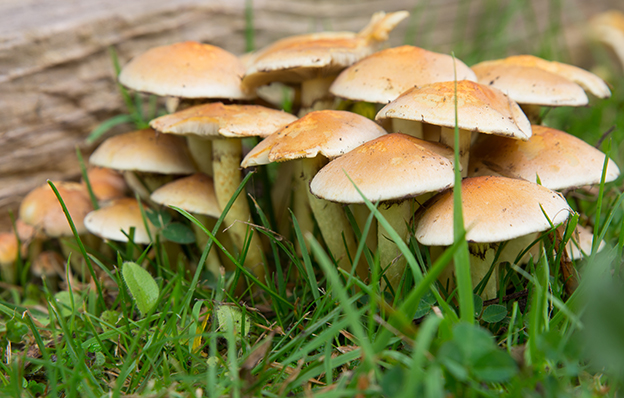
Funding for fungi-based innovations from food-tech incubator
Replacing the harmful, plastic additives in packaging with fungi is the goal of Israeli startup MadeRight. The company is based at the Fresh Start food-tech incubator in northern Israel. And its green concept is evidently attractive to a wider audience, as the firm has recently received US$2 million in seed funding to develop its sustainable solution.
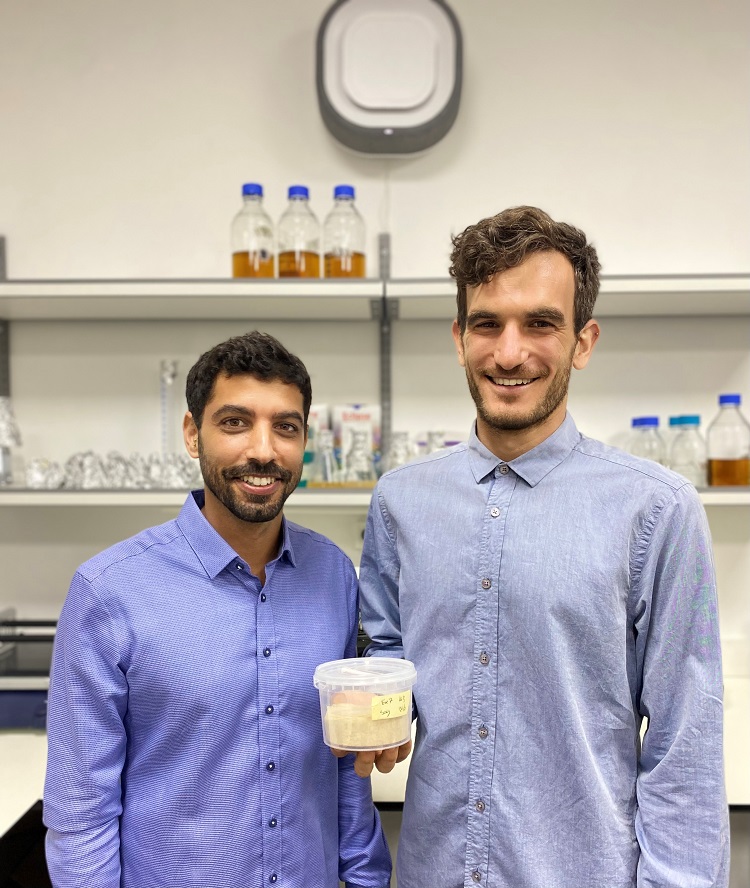
MadeRight’s process has three key parts: grow; convert; and produce. It firstly grows fungi on industrial organic waste, then converts the fungi into high-value biomaterials, before producing drop-in solutions that can be used in existing packaging machinery. Producing a new product that can simply slot into existing supply chains is a major advantage in this sector and the company has stated that its goal is to make the production of fungi-based packaging just as cost-effective as traditional packaging production systems in the food industry.
Speaking to The Times of Israel, MadeRight Co-Founder & CEO, Rotem Cahanovitc, said, “The concept of waste is a human construct, absent in the natural order, where Earth’s recyclers are fungi. This realization spurred my contemplation of revolutionizing plastic production, aiming for plastics that could be effortlessly recycled or even composted.”
MadeRight’s technology is already award-winning and is clearly catching the attention of some industry giants. Accolades include: winner of the ‘Unilever Sustainable Challenge Award’; winner of the ‘Mass Challenge 22 Cohort’; and winner of ‘2023 Disrupting The Future Of Plastics’. Cahanovitc and his team are now using the funding they have received to start developing packaging prototypes; watch this space to see if these also turn into winning solutions.
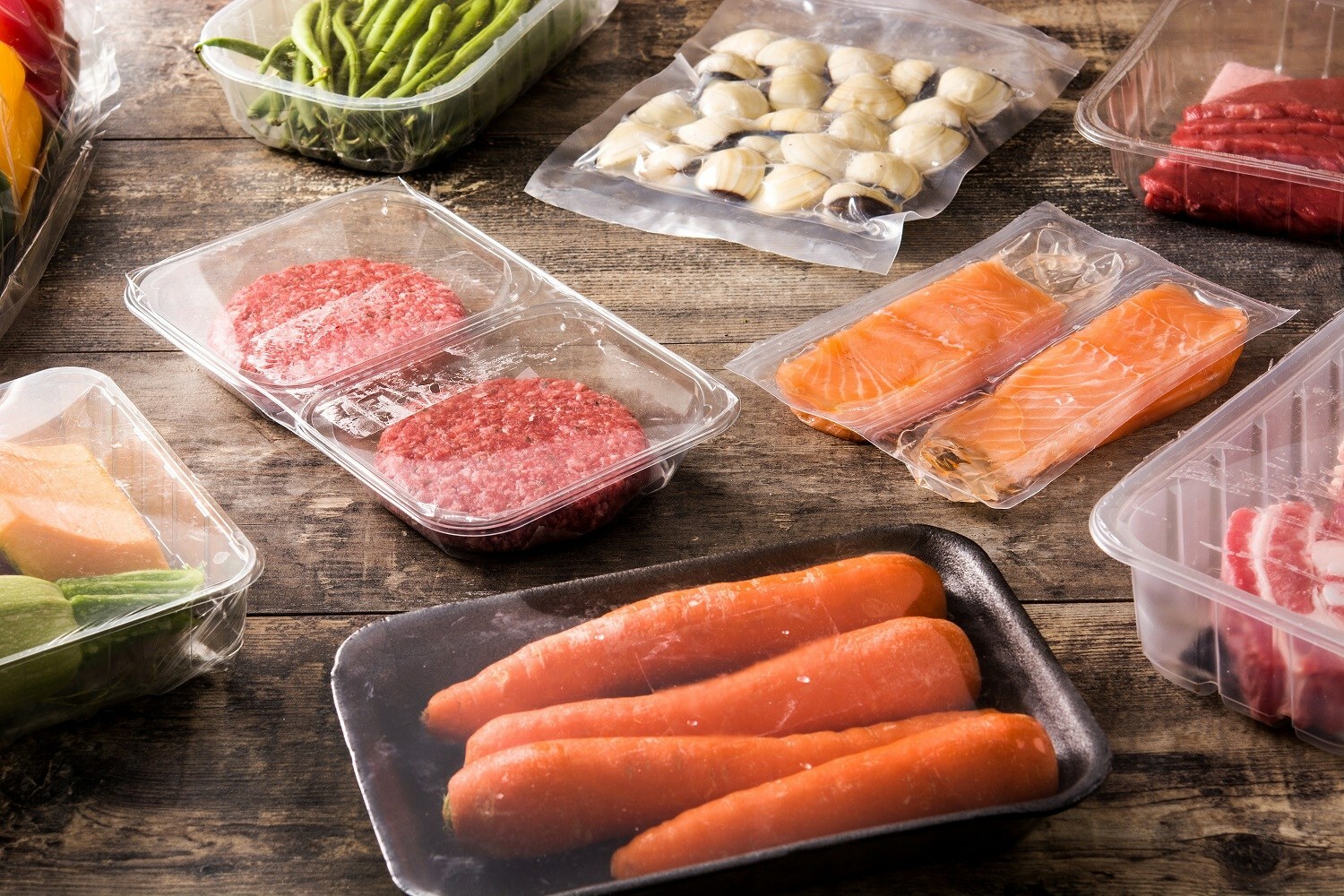
Plant-based barrier coatings for plant-based foods
Several companies are researching ways to produce plant-based packaging solutions such as barrier coatings. One that’s a considerable way down the path to commercialization is Melodea, another company that’s based in Israel.
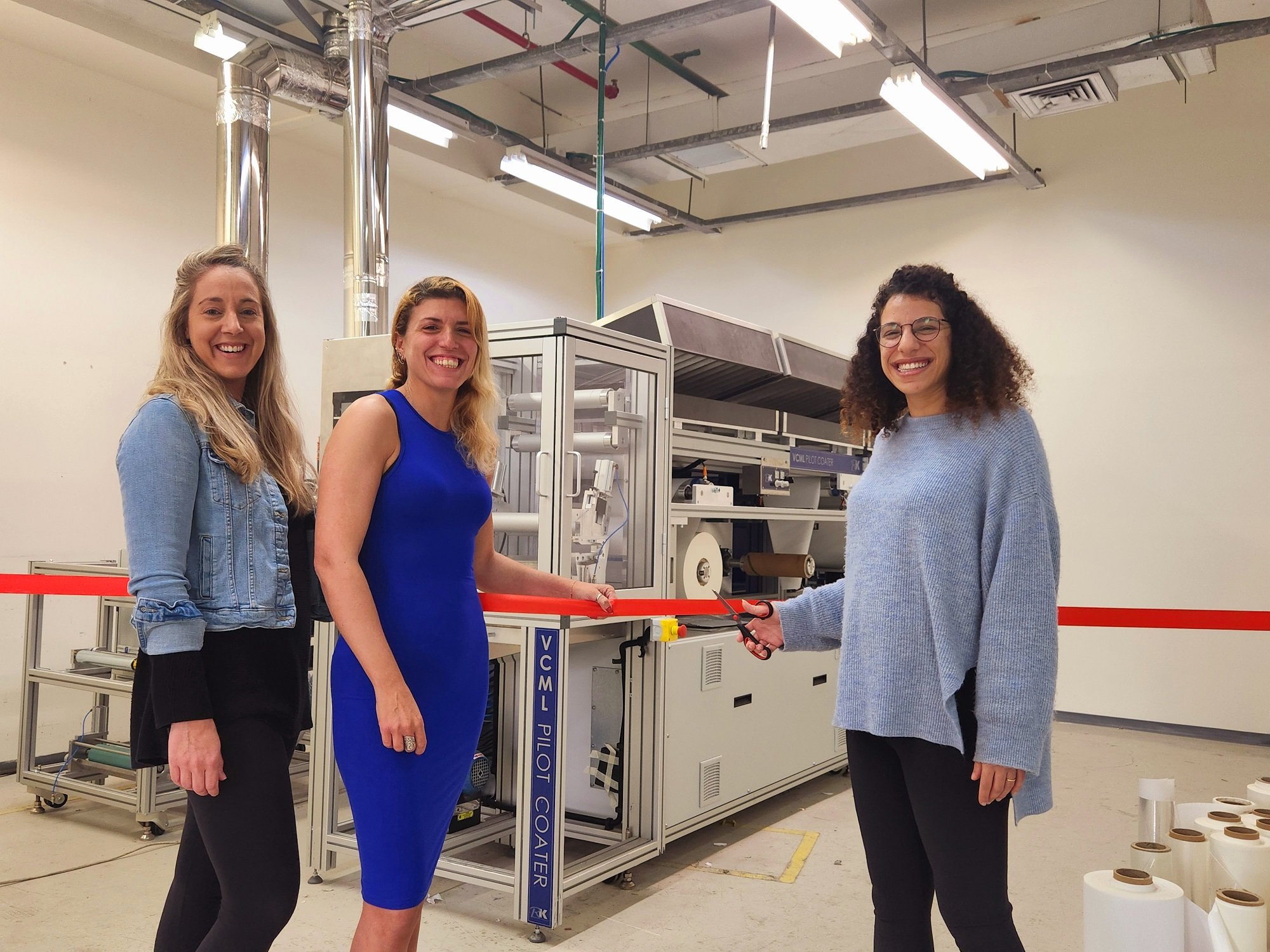
Melodea’s water-based, plant-sourced barrier coating was launched in July 2023. Speaking at the product launch, Shaul Lapidot, CEO & Co-Founder, explained, “The global collective effort to drastically curb plastic use is a long and complex process. Our holistic solution can help ease the pressure by boosting the integration of plastic packaging into the circular economy, immediately.”
The solution is called ‘MelOx Ngen’, and it is a new iteration of the company’s bio-based and renewable material, MelOx, for paper packaging. The new variant has been designed specifically for use on plastic.
The company says the new barrier has proven superior in both maintaining food freshness and substantially reducing plastic waste. Used to line packaging as a transparent layer, it’s been designed to offer a sustainable and cost-effective alternative to the petroleum-based ethyl vinyl alcohol (EVOH) copolymers that are currently widely used in packaging for their food preservation properties as well met-PET plastic materials commonly used to produce lids.
The new product announcement came less than a year after Melodea announced that, in line with increasing demand from the US market, it was opening a toll manufacturing plant. The aim was to enable the cost-effective production, shipping, and easier logistics of its two leading products: MelOx, and VBcoat, which counteracts the transmission of water, oil, and grease.
So, does this focus on the US market show where the company sees the biggest piece of the packaging pie, geographically speaking? When announcing the US plant, Lapidot stated, “The new plant, combined with our newly established ties in the USA, can potentially triple our manufacturing capacity to meet amplified demands. It also will shorten the travel and subsequent carbon footprint by bringing production closer to our main markets in South America and the USA.”

Equipment expert brings digital innovation to packaging
SEE, formerly SealedAir, has a multi-point focus on sustainability in packaging, with one driver being to bring as much digitalization as possible into the sector. It recently announced a partnership with Koenig & Bauer to improve packaging design capabilities by developing advanced digital printing technology, equipment, and services. They say the solutions developed in the partnership will “scale and deliver digitally printed materials dramatically faster, enabling brands to promote products by connecting with consumers through a digitally enhanced package”.
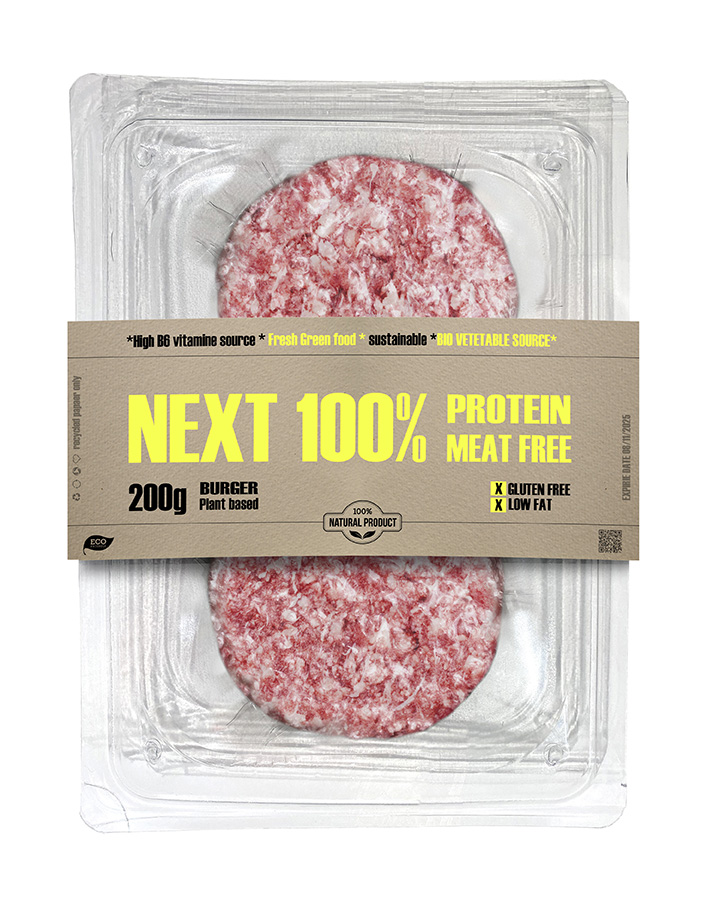
Digital content connected to packaging is an interesting concept on the consumer and branding side, but SEE is not neglecting its focus on ensuring that its packaging is as sustainable and high-performing as possible. It promotes the Cryovax vacuum skin packaging to the alt proteins sector, claiming it is “well suited for high-quality, case-ready products”. The ‘second skin’ helps preserve the freshness and extends the shelf life of the product.
“The materials used have been engineered to seal closely and tightly and remain free of tension, so product presentation remains optimal and holds firmly in place without the need to worry about leaks or purge.”
SEE says its Cryovax-brand Darfresh vacuum skin packaging combines “high-quality thermoforming rollstock as the flexible top web with a range of bottom carriers including pre-made trays, semi-rigid bottom web to create trays, or paperboard. As the product itself serves as the forming die, each package is finished to a smooth, tight fit, accounting for size and shape variation without creating folds or wrinkles”.
That’s appealing if you’re wanting to package an alt protein product – particularly cuts of meat alternatives. But despite a whole section on its website dedicated to ‘sustainability’ and actively advertising to the alt proteins market, almost every photo of SEE’s solutions in action on its website shows them on conventional meat, fish or cheese. Should SEE be doing more to convince customers that ‘sustainability’ isn’t just about digitalization and recyclable packaging?
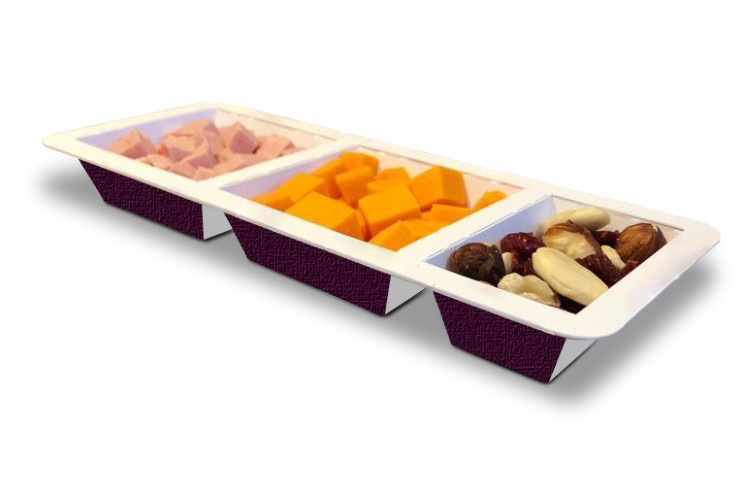
Engineering smart solutions from product to pallet
Harpak-Ulma is a US firm working across the entire packaging spectrum, from machinery automation and materials to thermoforming machines. It also partners with other players, including a collaboration with PaperSeal, Graphic Packaging, and G. Mondini, which saw the development of a cardboard packaging system with seal integrity designed to match that of traditional plastic trays while using 80% less plastic.
Notable in the news announcement surrounding this collaboration was that it made a point of stating that the packaging’s features – top seal, modified atmosphere packaging (MAP) and vacuum skin – made it ideal for fresh or frozen alternative meat products.
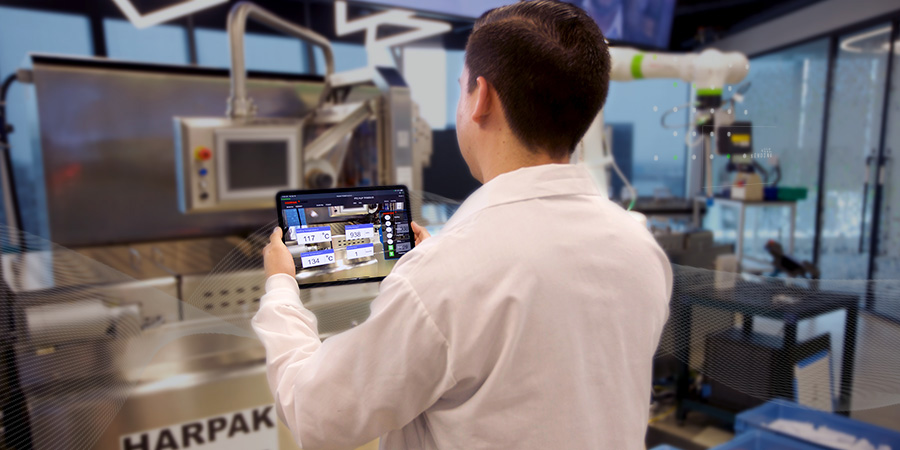
And having worked in the packaging sector for decades, the company is well placed to observe and answer the growing trends in sustainable options. Where once polyethylene terephthalate (PET) plastic ‘clamshell’ produce packaging would have been be the only answer, “the solution requires something more innovative and unconventional”, the firm states. “It requires an approach that utilizes modern technology to improve upon trusted packaging methods to make them more sustainable and scalable while minimizing the impact on the planet, consumer health and spending, and overall perception.”
This approach can be seen in the company’s PET pouches made on vertical form fill seal (VFFS) machinery. The PET clamshell is another. “Both are made from recyclable materials, adept at preserving freshness, lowering oxygen’s effects, and extending produce shelf life.”
But moving beyond tweaking or redeploying existing technologies, Harpak-Ulma says that, “Eco-friendly retailers know a better way: tray sealing,” believing this to be a great choice for sustainable produce packaging. Unlike single-use VFFS plastic bags or PET clamshell produce packaging, the firm says tray sealing achieves an “almost perfect balance” between packaging efficiency, preservation, and sustainable produce quality.
Tray sealing incorporates unique features to better preserve product and improve accessibility. Elements such as easy peel and reseal films, re-closable lids, and microperforations for better respiration all go a long way to optimizing produce freshness and shelf life while helping to minimize waste.
Harpak-Ulma also says that switching from PET clamshell produce packaging to tray sealing can reduce plastics by up to 15% overall from the onset. “With that kind of reduction, combined with the established infrastructure for recycling PET, tray seal produce packaging can be integral to improving sustainability with minimal effort.”
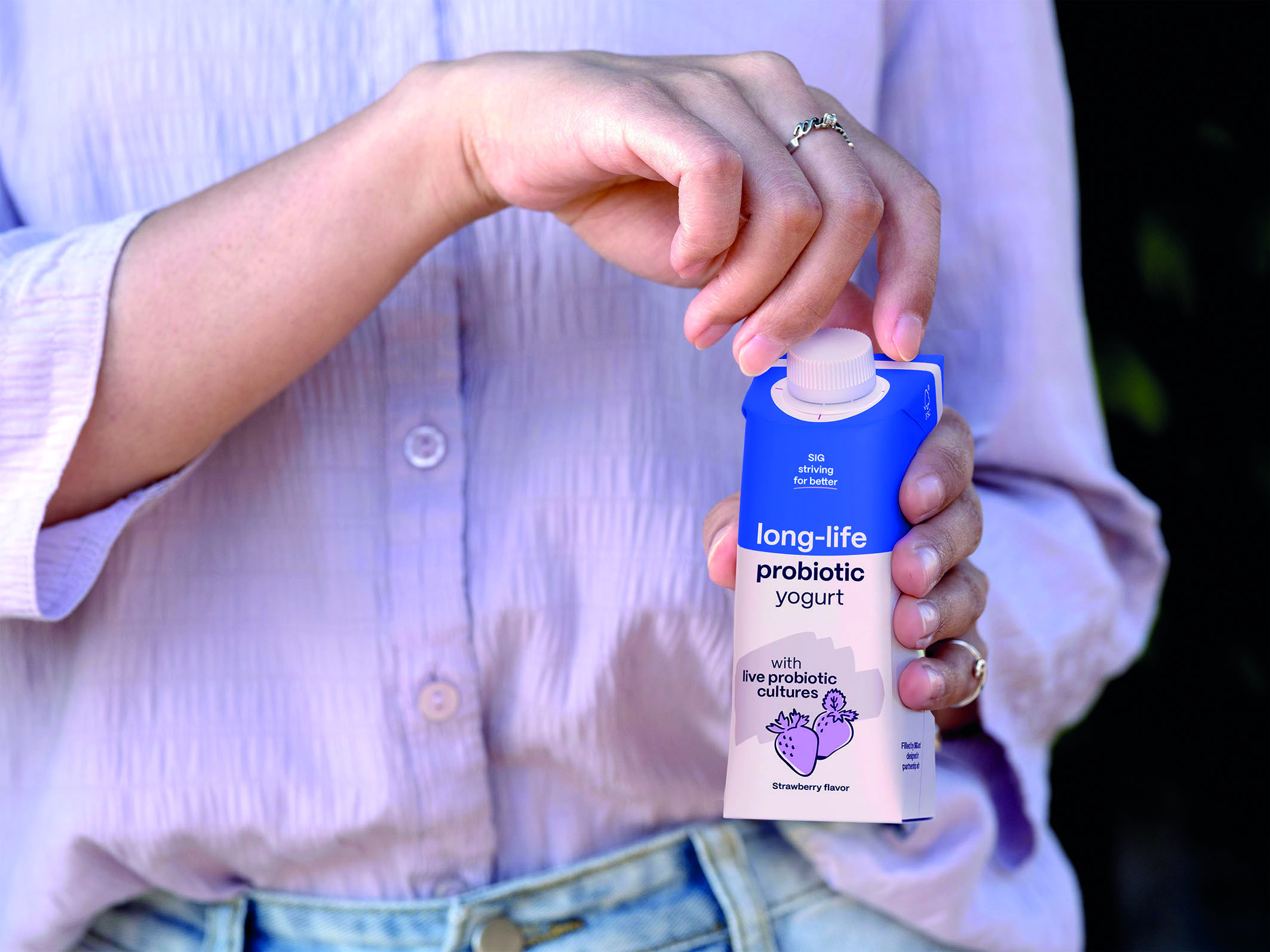
Polymer packaging products and the role of recycling
Swiss firm, SIG, offers products and consulting services to help meet a range of needs on the sustainability front, but has a broader focus on recycling and recyclability than many of the other big players in the packaging market.

One example of SIG’s innovation can be seen in its Terra line of sustainable polymers packaging material innovations, including what it claims is “the world’s first aseptic carton pack material up to 100% linked to forest-based renewable materials (via a mass-balance system)”.
Given that aseptic packaging is commonly used for products such as tofu and non-dairy milks, the market appeal for such solutions from the alt proteins sector is clear. A recent announcement on this front was soft drinks company, Hero Benelux, launching its first juice products in carton packs made of SIG Terra Forest-based polymers packaging material.
The theme of health and even the ‘food as medicine’ concept goes hand-in-hand with the newer generation of less-processed alt protein products, and a recent development showcases how packaging can play a role here. SIG and AnaBio Technologies recently launched a long-life probiotic yogurt – “a major breakthrough for probiotic beverages and aseptic packaging”. Indeed, the two firms say this development creates a new product category: probiotic beverages packed in aseptic carton packs and spouted pouches that are shelf-stable for prolonged storage periods without refrigeration.
Previously it was not possible to incorporate probiotics into aseptic beverage packaging due to their inability to survive the heat treatments used in processing. Probiotics can also be unstable during storage, typically restricting their use to refrigerated beverages with a short shelf life. The combination of AnaBio’s encapsulation technology and SIG’s gentle aseptic filling technology overcomes these restrictions, enabling F&B companies to produce probiotic beverages containing live probiotics that are packed in carton packs and spouted pouches and can be kept at room temperature for extended periods without refrigeration.
SIG is now focusing on raising the proportion of fiber in its aseptic carton structure. It plans to develop a full-barrier, aluminum-free aseptic packaging structure with at least 90% fiber content by 2030, with an interim target of at least 85% by 2025.
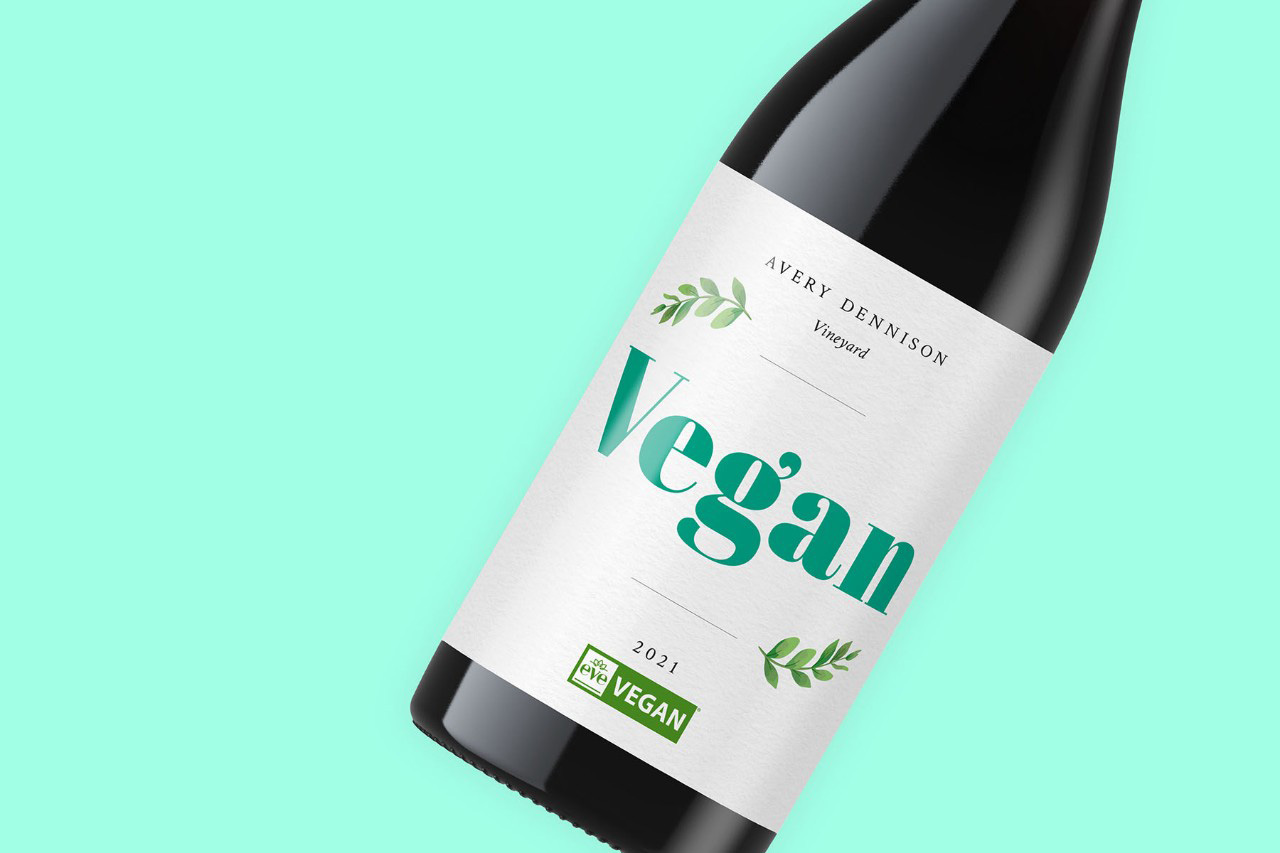
If a product is vegan, then its label should be vegan, too
Taking the view that the packaging and label must match the credentials of the contents, in 2022 Avery Dennison introduced what it believes to be the first vegan-certified labels on the market.
Product Manager, Luuk Zonneveld, says that this launch was prompted by the firm’s research into this area. “The stock response in the packaging sector was for companies to state that, ‘to the best of our knowledge, neither we nor our suppliers were adding animal derivatives to products’. However, this standard disclaimer was not enough. Both our customers and end-consumers asked for more proof, greater transparency, and better accountability. To differentiate ourselves, we knew we needed accreditation.”
The company decided to find a certification scheme that could prove the vegan credentials of its materials. It concluded that, “the label itself needed a label”. It then discovered an organization called Eve Vegan, part of Vegan France, and one of the relatively few international certification bodies willing to accredit packaging components.
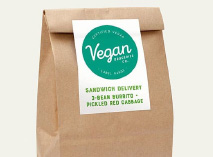
After analyzing the organization’s requirements, Avery Dennison investigated how it might meet or even exceed them. As plastic films would typically not be considered vegan, research efforts initially focused on three key components of the labeling solution: paper face-stocks, adhesives, and silicone release liners.
Suitable face-stocks and liners were found quickly, but the company then realized it would need to develop a new vegan adhesive.
Once that was developed, Avery Dennison was able to apply to Eve Vegan to have its French manufacturing plant audited and approved for the production of vegan products and materials.
With all three components – the face-stocks, liners and adhesives – now accredited, the company is offering an initial set of seven products in its vegan range.
As well as proving its vegan credentials, Avery Dennison is also making progress on the recyclability side of things. One example of this is a partnership with Jindal Films that saw the introduction of a PVDC-free oxygen barrier (OXYB) reclosure label. The companies say this is the first product of its kind for food applications and that it can improve recyclability and minimize waste. These labels offer two sustainability benefits: they minimize oxygen exposure and prolong the lifespan of packaged foods, while also making recycling easier and reduce plastic packaging in landfills.
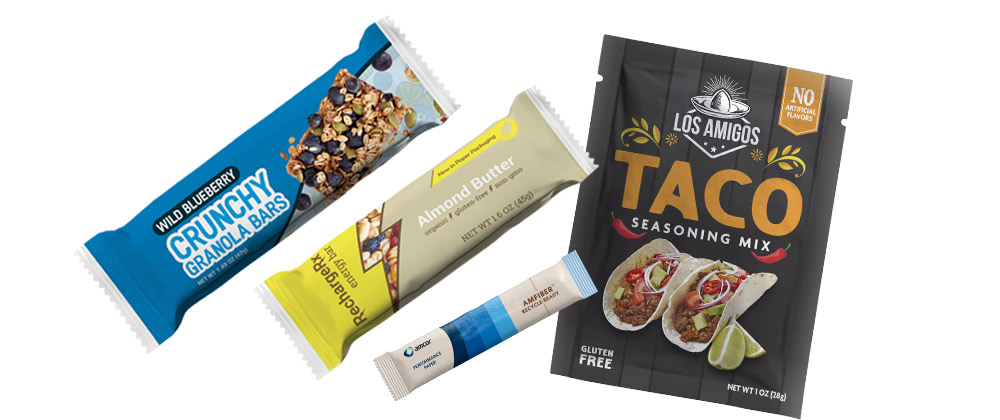
Recycle-ready range from packaging giant helps cater to sustainable industry trends
Amcor is responding to demand from the alternative proteins sector by offering several packaging options, including its ‘Packpyrus’ range, which uses paper-based packaging derived from renewable sources – although it still has some plastic in there, too.
Solving the dilemma of how to recycle packaging is a critical part of winning the battle for sustainability across the whole alt proteins supply chain. And, although the use of paper is not without its downsides, it remains – for now anyway – a less harmful option than plastic.
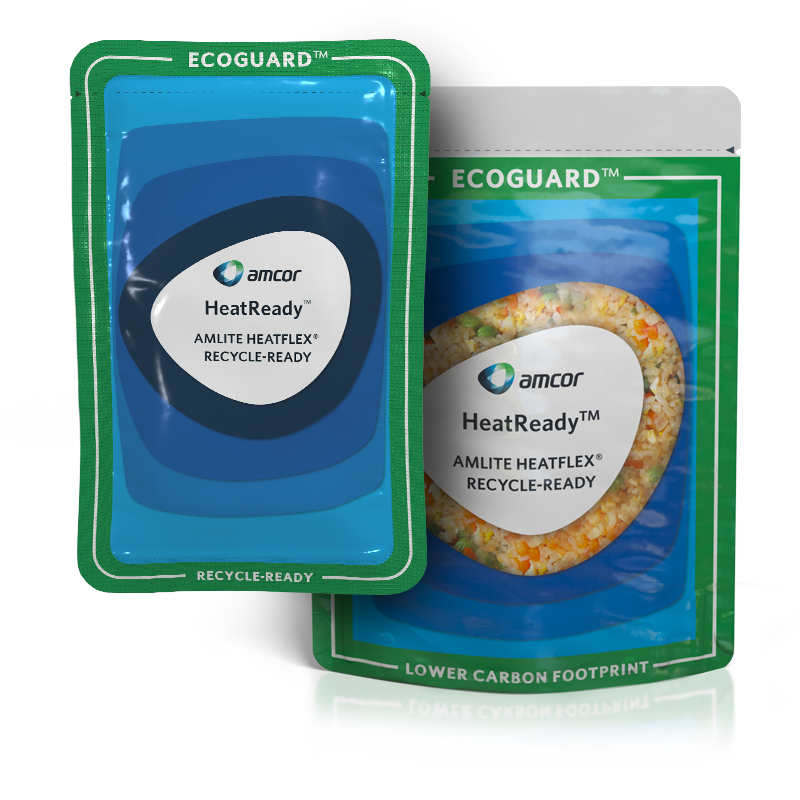
Amcor says its Packpyrus product results in a 10-30% packaging weight reduction, leading to further environmental benefits (e.g. reduced energy and water consumption, and reduced logistics costs).
Its SkinNova solution is also paper-based but again contains some plastic. It combines the firm’s SkinTite skin film with a flat cardboard base laminated to a high-barrier liner. Amcor promotes the SkinTite product around its ability to increase shelf-life (compared to traditional MAP packaging), which, it says, makes it ideal for plant-based burgers and soy protein-based foods.
Also, on the theme of freshness, Amcor offers ReClose, ideal for vegan food, snacks and slices. “ReClose has excellent seal properties that are high puncture- and tear-resistant, enabling the package to be opened and reclosed up to 15 times,” says Amcor’s Rosalia Rosalinova. “This goes a long way to help reduce food waste – another environmental plus point for consumers – while ensuring freshness and health benefits.”
As well as reducing food waste, Amcor is also focusing on waste on the production side and is working on achieving ‘net zero packaging waste’. In August 2023, a collaboration between Amcor and Mondelēz International saw the construction of one of Australia’s first advanced recycling facilities as part of the two giants’ investment in recycling technology pioneer Licella.
In an example of the circular economy, Licella will use catalytic hydrothermal reactor (Cat-HTR) technology to recycle end-of-life plastic back into a crude oil substitute suitable to produce new food-grade plastic packaging.

One-stop shop from machinery expert that’s targeting the alt proteins sector
Multivac is proactive in its efforts to grab a slice of the alt proteins market, even hosting a conference with Handtmann to explore how the two firms’ solutions can support businesses in this space. The company has also announced it is now a member of Germany’s BALPro (Federal Association for Alternative Protein Sources).
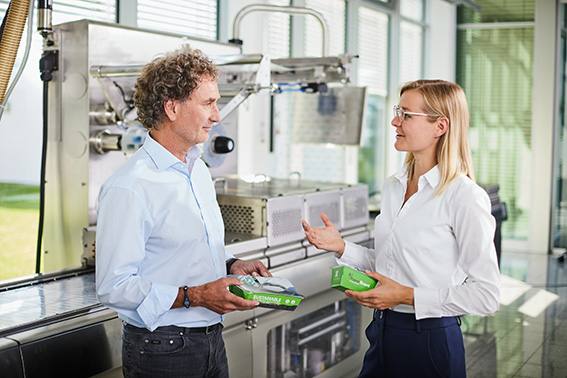
“To be able to feed the world’s growing population sustainably, while also saving the environment, is very important to drive forward the growth of alternative proteins,” says Christian Traumann, Group President. “As a major supplier of processing and packaging solutions, we have therefore decided to join BALPros. We see excellent opportunities here to exchange information with experts and companies, as well as bring our expertise in the area of food processing and packaging.”
Multivac says its aim is to assist manufacturers of alternative proteins in their growth. “Working in conjunction with our customers, we then develop tailored solutions, with which their products can be processed and packaged securely and cost-effectively,” says Klaus Deniffel, Project Manager for Alternative Proteins.
“And, if preferred, also in the new types of recyclable packaging materials, which offer an even better eco balance.”
In addition to manufacturing packaging machines, Multivac’s focus is on solutions for processing and slicing, marking and labeling, and for quality inspection as well as for product and package handling. The heart of its range for applications in the food-service sector is the R 085 e-concept thermoforming packaging machine, which is designed for packing small batches very efficiently – ideal for use by newer players in the alt proteins sector.
The machine is an entry-level model for packing products such as cuts of alternative meats in what are described as ‘attractive MultiFresh vacuum skin packs’. The technology enables maximum shelf life and perfect product presentation to be achieved even in small batches. The quality, freshness, color and texture of the product are presented in a natural way, and the content is held without any tension within the pack. The special packaging materials, which are optimized for the MultiFresh process, are also available from Multivac.
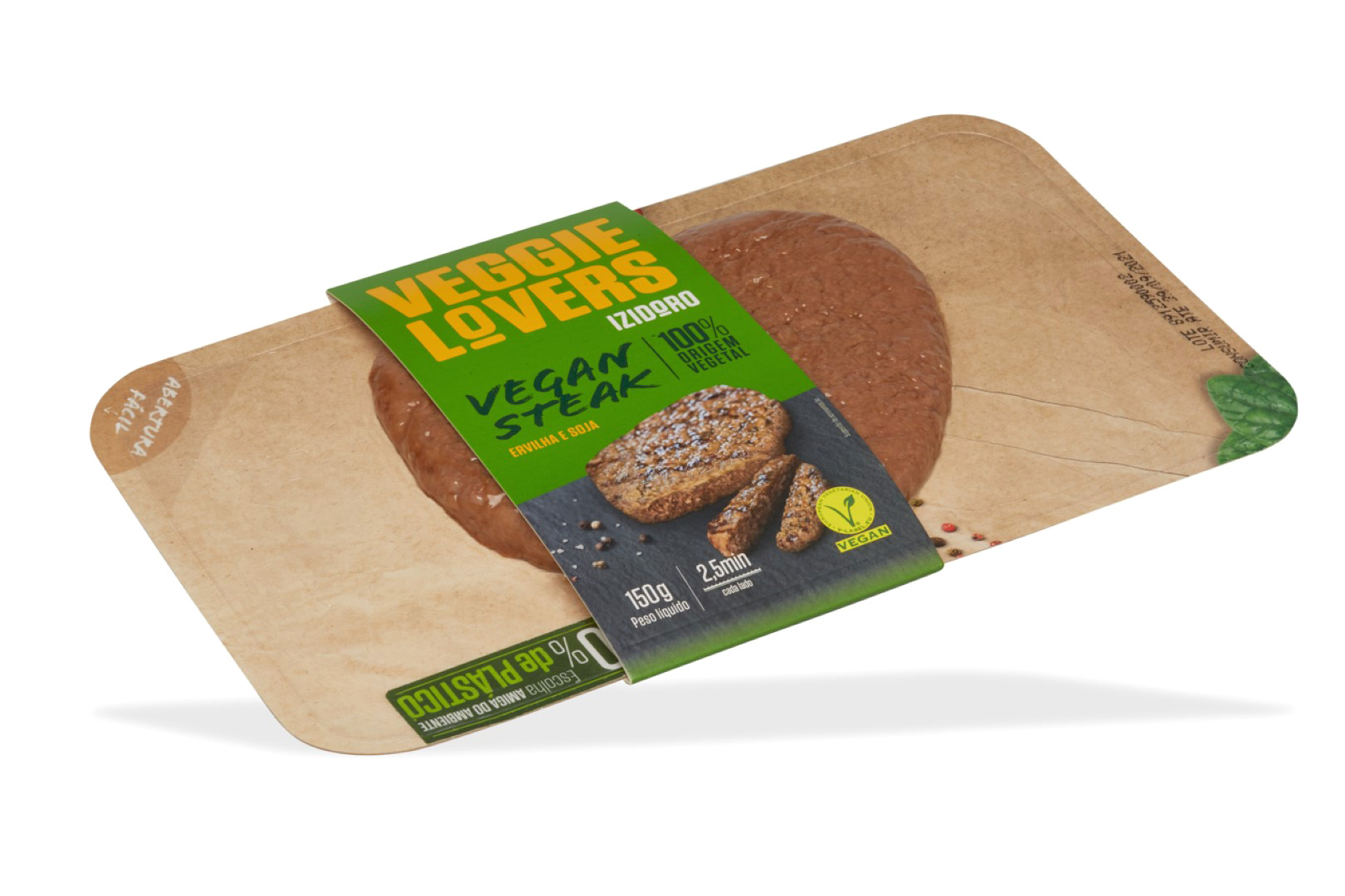
Future-focused approach that’s already proving popular for vegan products
Operating under the tagline ‘Future-proof packaging solutions’, it’s of no surprise that Germany company, Sealpac, is aiming to crack the alt proteins market. It offers a range of targeted concepts, such as the eTray, a paper-based tray for food products under modified atmosphere.

Reflecting consumer demand from the firm’s home country (Germany has almost a million vegans and seven million vegetarians), Sealpac has recently provided its eTray range to Ponnath, a traditional meat producer that has expanded into the likes of vegan ‘fish’ fingers and plant-based burgers.
Ponnath recently launched a vegan minced meat product and the eTray was selected as the optimal packaging solution. eTray is a joint development between Sealpac and tray manufacturer, Jaun-Neoform. The tray is suitable for modified atmosphere packaging and consists of two components: a high-quality cardboard base, which can be printed on both sides, and a plastic inner layer that purely provides the sealing and barrier function. Owing to a highly stable, uninterrupted sealing edge, each tray is reliably sealed under MAP to ensure the safest packaging process.
The companies say the eTray is suitable for de-nesting (separating trays that are stuck together) and allows for smooth transport across the packaging line. Compared with some other trays available, between 40-60% less plastic will be used, depending on shape and size.
To create a resource-saving solution, the inner layer is produced from mono PP instead of PET. Therefore, the concept meets the latest guidelines in German food retail, which requires packaging materials based on polyolefins (and therefore recycling-compatible).
There’s a final advantage on the recycling side of things, too: the double-sided, high-quality printability of the cardboard base provides Ponnath (and indeed any other alt protein firms) with plenty of room for storytelling – for example on how to separate and dispose of the various packaging components for recycling.
If you have any questions or would like to get in touch with us, please email info@futureofproteinproduction.com







